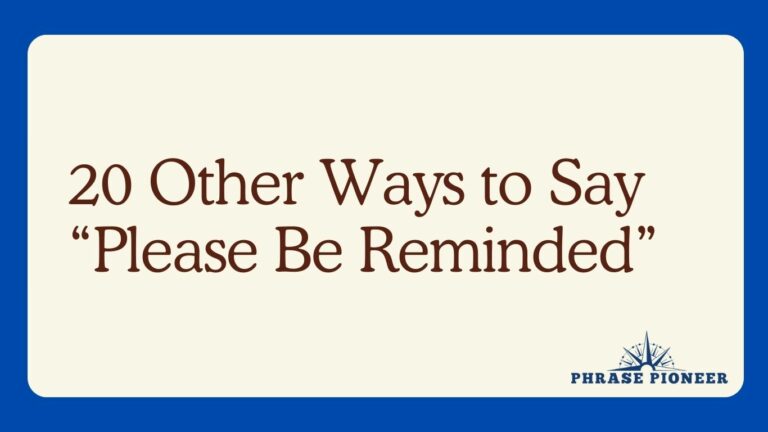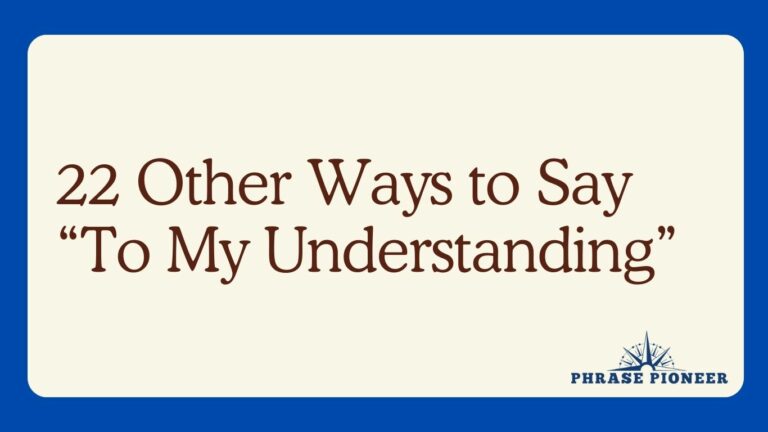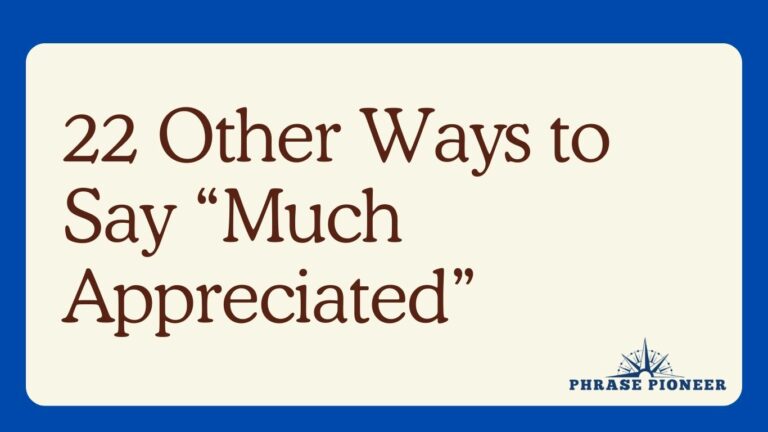20 Other Ways to Say “Then-Current”
The phrase “then-current” is often used to reference the state of something at a specific past time, especially in legal, historical, or business contexts. It implies conditions, laws, prices, or norms that were in place at that particular period. Here are 20 alternative ways to say “then-current,” each with an example sentence and an explanation.
Historical Reference
1. “At that time,”
- Example: “At that time, the policies of the company were much different than they are now.”
- Explanation: This phrase is commonly used to denote the conditions or rules that were in place during a specific past time frame.
2. “In that era,”
- Example: “In that era, the technology they had was considered state-of-the-art.”
- Explanation: Refers to the prevailing conditions or standards during a certain historical period.
3. “Back then,”
- Example: “Back then, the company was just a start-up with a handful of employees.”
- Explanation: ‘Back then’ is a casual way to reference past circumstances or situations.
Contextual Timeframe
4. “Of that period,”
- Example: “The fashion of that period was truly unique to the cultural climate.”
- Explanation: This phrase specifies the characteristics or attributes belonging to that particular time.
5. “From that time,”
- Example: “The laws from that time were much less stringent than today’s regulations.”
- Explanation: Indicates the origin or state of something in relation to a past time.
6. “During that time,”
- Example: “During that time, the market was experiencing a significant boom.”
- Explanation: Denotes the occurrence or state of something within a specific past interval.
Specific Historical Contexts
7. “Prevalent at the time,”
- Example: “The strategies prevalent at the time were not conducive to long-term growth.”
- Explanation: Describes attitudes, beliefs, or strategies that were widespread or dominant during a past period.
8. “As it was then,”
- Example: “The city, as it was then, had a much smaller population.”
- Explanation: Provides a snapshot of conditions or circumstances as they existed in the past.
9. “In those days,”
- Example: “In those days, communication relied heavily on the postal service.”
- Explanation: A slightly more colloquial phrase referencing the general state of affairs during a particular past epoch.
Temporal Indicators
10. “Contemporaneous with that time,”
- Example: “The design styles contemporaneous with that time displayed a lot of geometric patterns.”
- Explanation: A formal term indicating that something existed or occurred at the same time as the events or conditions being discussed.
11. “In the context of that time,”
- Example: “In the context of that time, such a political stance was extremely radical.”
- Explanation: Relays a piece of information within the frame of the period being discussed.
12. “At that historical juncture,”
- Example: “The nation, at that historical juncture, was on the cusp of major social changes.”
- Explanation: Combines a sense of timeline with the pivotal nature of that moment in history.
Legal and Formal Usage
13. “Under the conditions that were then,”
- Example: “The contract, under the conditions that were then, didn’t account for digital distribution.”
- Explanation: A legalistic way to discuss the provisions or stipulations as they existed at a particular point in the past.
14. “As per the standards of that time,”
- Example: “The building was constructed as per the safety standards of that time.”
- Explanation: Relates current knowledge or assessment with the reference standard in place during the said timeframe.
15. “According to that period’s definition,”
- Example: “The term ‘broadband,’ according to that period’s definition, meant much lower speeds than today.”
- Explanation: Examines a concept as it was understood in the specific past period.
Period-Specific Characteristics
16. “Characteristic of those times,”
- Example: “It was a decision characteristic of those times, made amidst a different social climate.”
- Explanation: Highlights the qualities or decisions that specifically typified that time period.
17. “Per the era’s norm,”
- Example: “Per the era’s norm, apprenticeships lasted much longer than they do today.”
- Explanation: Places behavior or customs in the context of what was typical in the referenced era.
18. “Reflective of that age,”
- Example: “The artwork is reflective of that age, capturing the revolutionary spirit.”
- Explanation: Indicates that something mirrors or represents the spirit, style, or ethos of a particular past age.
Suggesting Change or Difference
19. “Considering the then-status,”
- Example: “The decision, considering the then-status of the political landscape, was quite progressive.”
- Explanation: Weighs a past action or decision against the situational dynamics of that specific past time.
20. “As was customary at that period,”
- Example: “As was customary at that period, meetings were held twice a day.”
- Explanation: Referencing that a particular action was a routine or common practice during the past time being discussed.
Each of these alternative phrases to “then-current” allows the speaker to contextualize information within a specific past timeframe. They can be useful in various discourses, from academic and professional to everyday discussions, providing clarity on the temporal relevance of actions, norms, or conditions.







